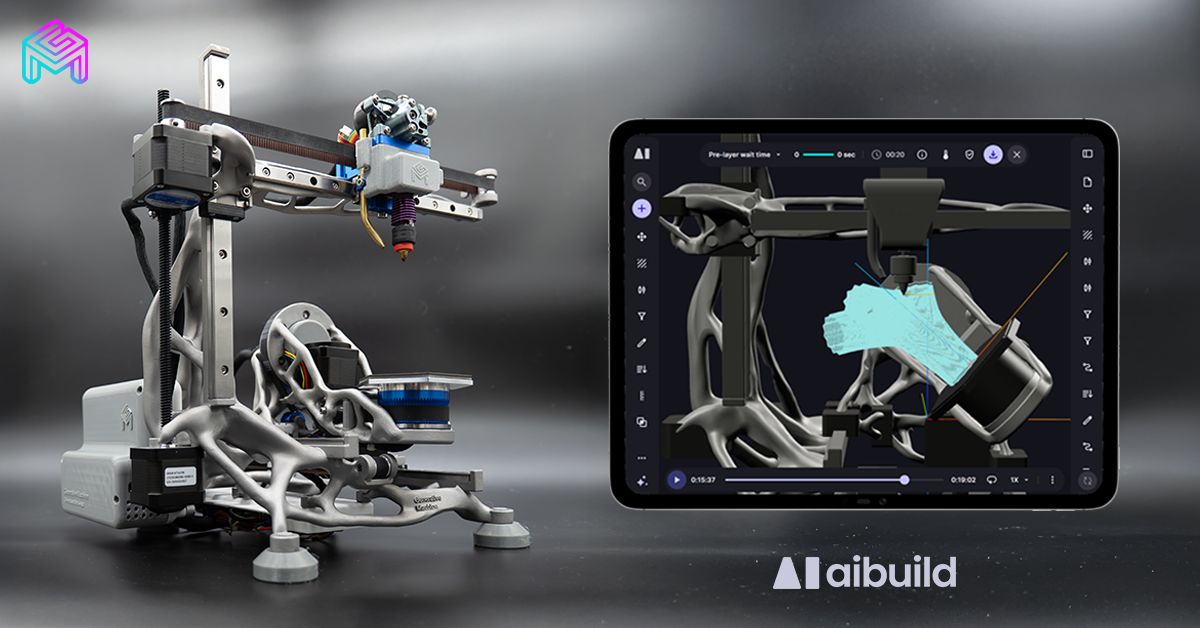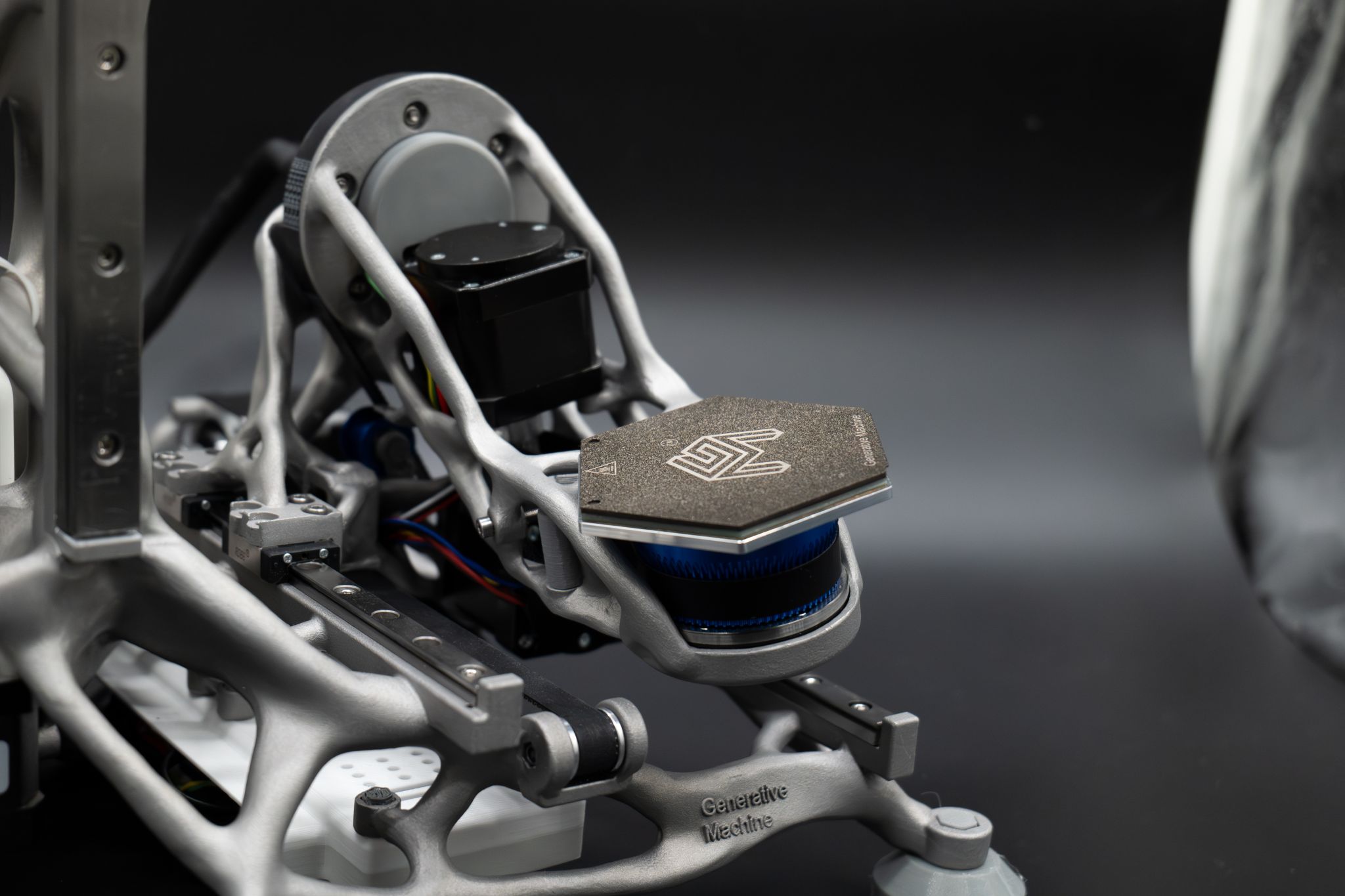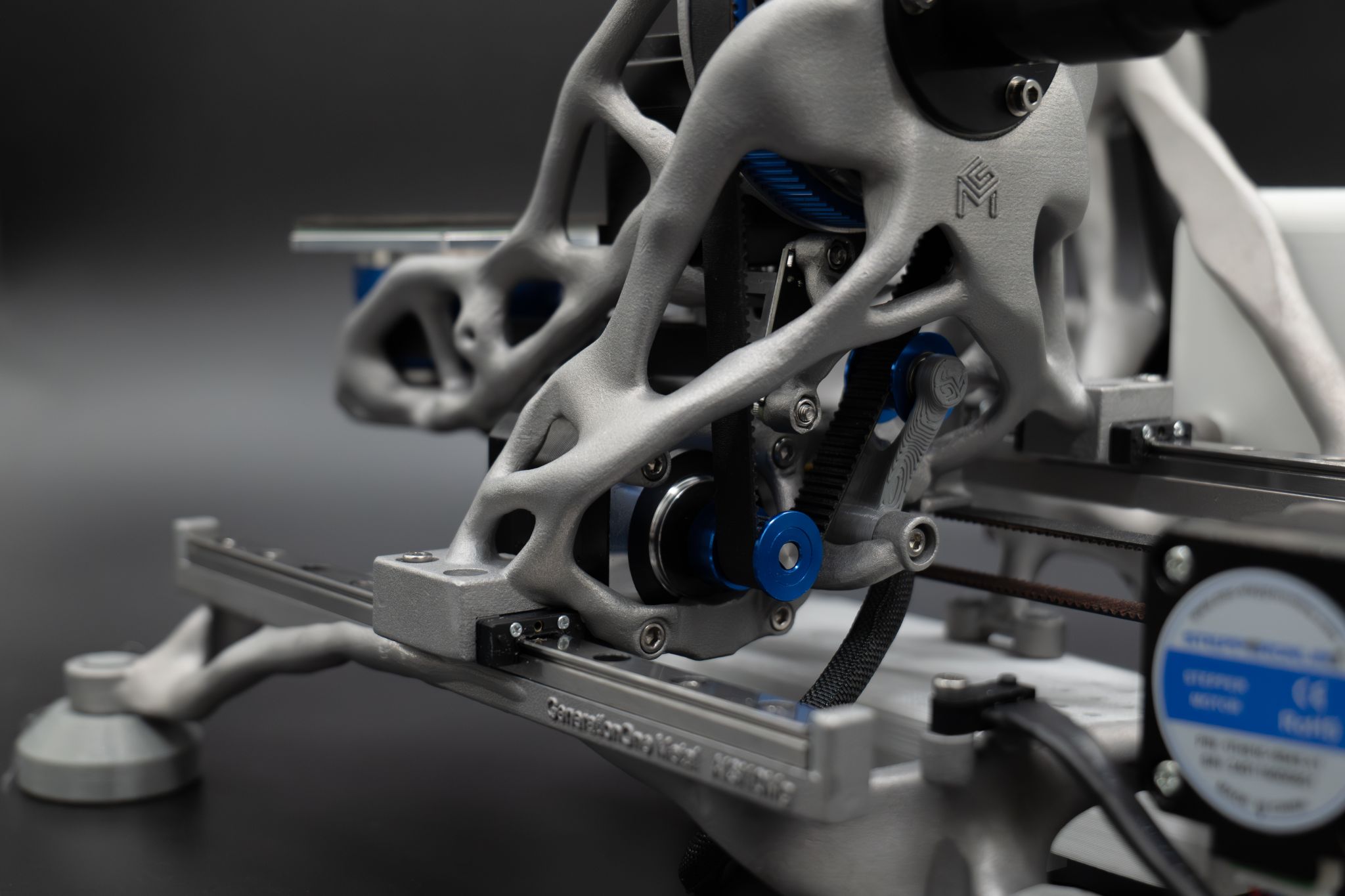Generative AI used to create wild new 3D printer design — exotic collaboration brings 5-axis 3D printing to the desktop

A collaboration between two London-based companies, Generative Machine and Aibuild, has heralded a new type of 3D printer. The GenerationOne 5-axis is a generatively designed 3D printer, and will soon be available via a limited batch.
The cantilever design of the GenerationOne looks very much like a Bambu Labs A1 Mini, but with an organic twist in the form of tendrils that resemble fluidic arms that support the main body of the printer. We get around 140 x 180mm of build volume, but the printing platform is interchangeable, and leveling is all automatic. Precise and fast movement across the axis is made possible using linear rails, and the printer is made from off-the-shelf components. So what filaments does it print? This is more for the PLA and PETG makers out there. No exotic carbon fibre or specialist engineering filaments, yet.



Generative Machine CEO, Ric Real, talks about bringing advanced printing capabilities, usually found in robotics and Large Format Additive Manufacturing (LFAM). What are these advanced capabilities? The main capability is printing in 5-axis. Instead of the traditional three-axis used in almost all FDM (Fused Deposition Modeling) 3D printers, such as the Bambu Labs A1, Elegoo Centauri Carbon, etc. Printers using three axes have strength along the X and Y axes, but the Z axis, where layers of plastic are built up to create the object, relies on the strength of the layers. Strength that is much weaker than the other axis.
The 5-axis system can reorient the nozzle to print non-conformally. Why is this important? It means that prints can be re-oriented to print stronger and "allows for complex geometries to be printed without support structures and conformally, enabling improved surface finishes and part properties that can be tailored to specific use cases," according to the press release. With this, we should get improved interlayer strength through better adhesion. This translates into stronger prints.
Controlling all of this is industry-grade software, enhanced by Aibuild to slice and fully utilize all of the axes. The software provides parametric slicing strategies, automated toolpath generation, and of course multi-axis printing optimization tailored for 5-axis printing.
Details on price and availability are scarce, but a limited batch of the printers will be at the Formnext Expo and Convention from November 18 in Frankfurt, Germany.

Follow Tom's Hardware on Google News, or add us as a preferred source, to get our latest news, analysis, & reviews in your feeds.
Get Tom's Hardware's best news and in-depth reviews, straight to your inbox.

Les Pounder is an associate editor at Tom's Hardware. He is a creative technologist and for seven years has created projects to educate and inspire minds both young and old. He has worked with the Raspberry Pi Foundation to write and deliver their teacher training program "Picademy".
